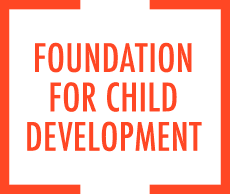https://www.fcd-us.org/americas-vanishing-potential-the-case-for-prek-3rd-education/
AMERICA’S VANISHING POTENTIAL:
The Case For PreK-3rd Education
Many people like to believe that American children are generally doing quite well in school. But by the Fourth Grade, more than half of White and Asian American children cannot read at grade level. For Latino, Black and American Indian children, the numbers are even worse. More than 80 percent cannot read at grade level by Fourth Grade. Most of the children who do not master the fundamentals of elementary education will require costly remediation in middle and high school. Many will struggle to avoid dropping out of school. Some will end up in prison, and most will not be able to lay claim to the American Dream.
Children’s success in school and in life must be built on a foundation of seamless learning during their earliest PreK-3rd school years. PreK-3rd teachers and administrators work together across these grade levels, building strong connections and linking learning experiences across these critical years. Yet currently, most children experience a wide range of disparate experiences that jumble together and end up requiring our youngest learners to figure them out on their own.
Our children are not failing to learn. Our schools are failing to teach them effectively. To reverse this trend and provide children with the skills necessary for life-long learning, all Americans must take responsibility for guaranteeing a high-quality PreK-3rd education to this and future generations.
| U.S. Fourth Graders Reading At or Above Grade Level in 2005 | |
| Asian American or Pacific Islander | 40 percent |
| White | 39 percent |
| American Indian | 19 percent |
| Latino | 15 percent |
| Black | 12 percent |
| Source: National Assessment of Educational Progress (NAEP), 2005 Reading Assessment |
To give America’s children the future they deserve, it is time to re-think how we begin the educational experiences of young children ages three to eight. Unfortunately, Kindergarten attendance is mandatory in only 12 states today. Thirty percent of American children still attend only half-day programs for two to three hours per day, and only two states require children to attend full-day Kindergarten.
Nationally, only about thirty-five percent of all four-year-olds are in publicly supported Prekindergarten programs. Currently, Oklahoma is the only state where Universal Prekindergarten is part of the state-funded educational system and is delivered primarily by public schools. Bringing three- and four-year-olds into the education system doesn’t mean pushing down academic work into Prekindergarten or Kindergarten. On the contrary, PreK-3rd strengthens the connections between the activities and expectations that can be found in different grades and classrooms, based on a deep understanding of children’s capacities.
It is increasingly clear that the cornerstone of a strong public education system must be built on a solid Prekindergarten through 3rd Grade (PreK-3rd) foundation. Currently, most Prekindergarten, Kindergarten and elementary school teachers work in isolation from one another. They typically undergo widely varying preparation and training, work in different buildings, report to different supervisors, and have few(if any) opportunities to work together. When teachers cooperate across grades levels, however, the links between school years and lessons become more explicit and children are more likely to benefit.
In addition, it’s important to recognize that every year of schooling counts. The tracking of annual progress must inform how teachers can best teach students, rather than just moving children from one grade to the next.
Teachers in middle schools cannot effectively boost academic achievement without building on the educational experiences students bring to the Fourth Grade. It’s clear that successful early schooling must ensure that annual progress builds successfully from one year to the next.
Schools that connect high-quality Prekindergarten programs with high-quality Kindergarten, First, Second and Third Grades have produced strong student performance. Longitudinal studies of the Chicago Child-Parent Centers show that implementing an integrated PreK-3rd approach contributes significantly to sustaining and enhancing the achievement gains seen in high-quality, stand-alone Prekindergarten programs.
Success in the early grades depends on the adoption of good teaching and administrative practices throughout all U.S. Prekindergarten programs, which are provided by a mix of private, nonprofit, for-profit, religious and secular sponsors, as well as public schools. The existence of different educational starting points is not important as long as these diverse educational environments all adhere to similar high standards and provide a solid foundation for children’s lifelong learning.
It is critical to sustain the gains achieved in high-quality Prekindergarten programs by connecting them with complementary and coordinated education in Kindergarten, First, Second and Third Grades.
PreK-3rd is not just about extending the existing education system to serve younger children, but is about changing that system itself. This approach starts with three-year-olds and focuses on providing educational experiences to three- and four-year-old children on a universal, voluntary basis, followed by required full-school-day Kindergarten.
Effective PreK-3rd provides: High-quality and unified learning in well-staffed classrooms; well-prepared teachers and aides to educate children in the 3-8 age range; supportive school district policies; strong principal leadership that includes supporting professional development time for teachers to plan for effective coordination across and between grades; and includes families and communities that share accountability with PreK-3rd schools for children’s educational success.
Adopting a universal and unified PreK-3rd approach is the starting point for a comprehensive transformation of the U.S. public education system. America’s democratic traditions and economic power in an increasingly competitive international marketplace demand the transformation of public education to promote the lifelong learning of America’s future generations.
We’re living in a 21st Century world. It’s time to create a 21st Century education system for America’s youngest learners.
